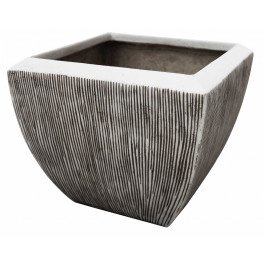A hummingbird feeder is a like a dessert bar to an ant. With even the slightest scent of something sweet, these tiny pests march in and take over. Hummingbirds want nothing to do with a feeder that is crawling with ants. One of the best ways to ant-proof your hummingbird feeder is to use an ant moat. Some feeders come with this option. If your feeder does not have an ant moat, you can buy one or better yet, make one from objects you probably have in your house.

Photo by Sari ONeal on Shutterstock
Leaky Feeders
Ants will be especially attracted to your feeder if it is leaking sugar water or nectar. A leaking feeder is usually the result of the nectar heating up and expanding in the sun. Try to hang your feeder in a shady spot. Also, clean up any spills and wipe the area under the feeder periodically. Hummingbirds can drip nectar as they are feeding. Ants can detect even the tiniest drops.
Ant Moats
If you are buying a hummingbird feeder, look for one that has an ant moat. An ant moat is a cup part of the feeder that you fill with water. As ants try to climb down to the sweet nectar inside the feeder, they will fall into the moat and drown. If you live in a warm climate, you will need to refill the ant moat frequently and remove any dead ants. If enough dead ants wind up in the moat, live ants will use them as a bridge to get to the feeder.
If your feeder does not have an ant moat, you can buy one or make one. The ant moat is a small cup that goes between the feeder and the hanging point. Ant moats can be very decorative or plain. You will find them in hardware stores and any place that sells hummingbird feeders. You can also buy them online.
To make a simple ant moat, find a small bottle or aerosol can cap. You can use anything that is lightweight and will hold water.
Drill a hole and slide it over the feeder rod. You may need to use some silicone sealant to stop any leaks.
Install the rod into the feeder. Fill the cup or bottle with water and no more ants in the feeder.
If your hanging rod is not long enough for installing an ant moat or your feeder does not have a hanging rod, you can screw a hook into the cap and hang the feeder from the cap. Depending on how much time you want to spend on the moat, it can be a simple or elaborate project. The goal is to place a cup of water above the feeder to stop the ants from getting in.
To make an ant moat from an aerosol can cap, drill a small hole in the bottom. You can also use a nail or an icepick to make a hole, but you want the hole as small as possible so the water does not leak out.
Screw in a hook. This will be the hanging hook for your feeder.
Drill three or four holes in the sides of the cap and use string or rope to hang the cap. If you have a heavy feeder, you may want to place a small piece of wood in the cap and screw the hook through the cap and into the wood to ensure the hook does not pull out of the cap. If water leaks through the hole, you can seal it with glue, silicone sealant or candle wax.
You now have an ant moat that can be used with almost any style of feeder.
Petroleum Jelly
Coating the hanging rod or wire with petroleum jelly is another way to deter ants. They don’t like to cross the greasy stuff and will be temporarily stopped from invading the feeder. Unfortunately, ants are very persistent and will use each other to form a bridge over the slippery rod and find their way back into the feeder. You will need to coat the hanging rod or wire frequently.
Location
If ants continue to be a problem, move your feeder to a different spot. Ants follow ant-paths and if their food source suddenly disappears, so will the ants. The hummingbirds will have no trouble finding the feeder. Wait a week and then return the feeder to your favorite location if you would like.

Photo by Colton Stiffler on Shutterstock
Keep Your Feeder Clean
It is important to keep your hummingbird feeder clean. Aside from ants getting into the feeder, mold and mildew can also form. This can be toxic to hummingbirds. Some styles of feeders are easier to clean than others.
The types that have a screw-on reservoir are much harder to clean than the push-on, flat styles. When selecting a new feeder, choose one that will be easy to clean over one that is fancy. The hummingbirds don’t care what it looks like.
You should also change the sugar-water or nectar frequently. Especially during hot weather, sugar-water can ferment if left out too long. If the little birds are not draining the feeder, fill it only half way. You should clean and refill a feeder every three to four days.
Hummingbirds are amazing little birds and a real joy to watch. They are very territorial and will defend their feeders. If you want to attract even more hummingbirds, hang two or three feeders out of sight of each other so you don’t start territory wars. But most importantly, keep their feeders clean and ant-free to ensure your feathers friends will return year after year.

























